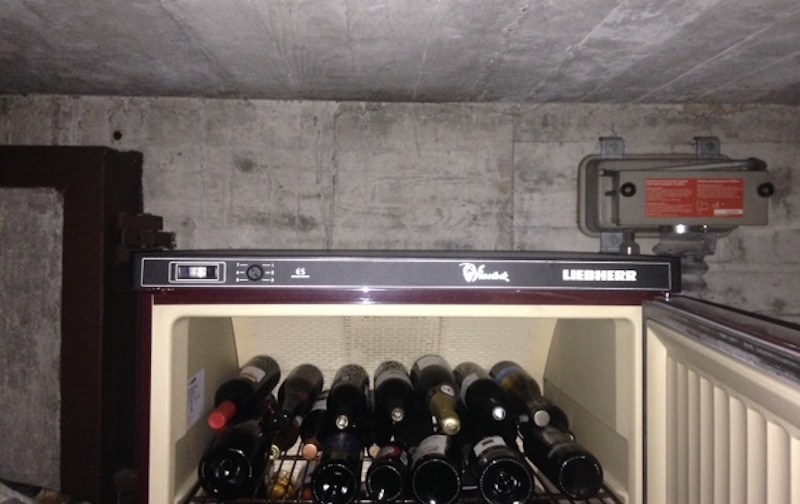Swiss Federal Office for Agriculture (FOAG) statistics show a decline in Swiss wine consumption in 2016. Swiss residents consumed less rosé, less white and less red wine. Lavaux Switzerland – © minnystock | Dreamstime.com Total consumption in 2016 was 253 million litres, down from 262 million litres in 2015, a drop of 4%. This follows drops of 2% in 2014 and 1% in 2015, a total decline of nearly 7% over three years. The 2016 figure equates to 40 bottles per resident. When those 19 years old and below are removed from the calculation, average consumption rises to 50 bottles a year, or nearly one a week. According to addiction suisse, 13.8% of Swiss over 15 drink no alcohol. If this percentage is removed (the age cutoffs overlap so the figures are not perfect), the annual bottle count rises to 59 bottles per person. Compared to the rest of the world Swiss per capita wine consumption is around the middle of the top 20 wine-drinking nations. 2015 figures from the Wine Institute place it 17th in terms of aggregate wine consumption, but when adjusted by population, it rises to 9th on a per capita basis. © Ciolca | Dreamstime.com 35% of the wine consumed in Switzerland is produced locally. 52% of the white wine sold in Switzerland is indigenous, while only 27% of the red wine sold is home grown.
Topics:
Investec considers the following as important: Business & Economy, Editor's Choice, Swiss Life, Swiss wine consumption, Swiss wine exports, Swiss wine imports
This could be interesting, too:
Investec writes The global brands artificially inflating their prices on Swiss versions of their websites
Investec writes Swiss car insurance premiums going up in 2025
investrends.ch writes Swiss Life steigert den Gewinn und bezahlt mehr Dividende
Investec writes The Swiss houses that must be demolished
Swiss Federal Office for Agriculture (FOAG) statistics show a decline in Swiss wine consumption in 2016. Swiss residents consumed less rosé, less white and less red wine.

Lavaux Switzerland – © minnystock | Dreamstime.com
Total consumption in 2016 was 253 million litres, down from 262 million litres in 2015, a drop of 4%. This follows drops of 2% in 2014 and 1% in 2015, a total decline of nearly 7% over three years.
The 2016 figure equates to 40 bottles per resident. When those 19 years old and below are removed from the calculation, average consumption rises to 50 bottles a year, or nearly one a week. According to addiction suisse, 13.8% of Swiss over 15 drink no alcohol. If this percentage is removed (the age cutoffs overlap so the figures are not perfect), the annual bottle count rises to 59 bottles per person.
Compared to the rest of the world Swiss per capita wine consumption is around the middle of the top 20 wine-drinking nations. 2015 figures from the Wine Institute place it 17th in terms of aggregate wine consumption, but when adjusted by population, it rises to 9th on a per capita basis.

© Ciolca | Dreamstime.com
35% of the wine consumed in Switzerland is produced locally. 52% of the white wine sold in Switzerland is indigenous, while only 27% of the red wine sold is home grown.
French speaking Switzerland is by far the nation’s largest wine producing region, comprising 11,000 hectares, 75% of Switzerland’s vineyards. Far behind are the German-speaking region (2,600 hectares – 18%) and Italian-speaking Ticino (1,100 hectares – 8%). The largest producers by canton are Valais (4,900 hectares – 33%), Vaud (3,800 hectares – 26%), and Geneva (1,400 hectares – 10%). In 2016, Switzerland produced 108 million litres of wine. 49% of the harvest in 2016 was white and 51% of it was red.
There are many grape varieties grown in Switzerland. The FOAG report lists 276. The most important cépages were Pinot Noir (28%), Chasselas (26%), Gamey (9%) and Merlot (8%) – together 70% of the total vineyard area.
2015 data from the Wine Institute places Switzerland 28th in the world for wine production, with 0.35% of total world output.
In 2016, Switzerland imported 185 million litres of wine, 123 million litres of it red, 39 million litres of it white, and 22 million litres of sweet and bubbly wines. The largest imports came from Italy (74 million litres or 40%), France (39 million litres or 21%), Spain (32 million litres or 17%) and Portugal (11 million litres or 6%).
Swiss wine exports in 2016 were a tiny 1.2 million litres, 1.1% of total production.

Wine stored in a Swiss home bomb shelter.
Swiss wine stocks grew substantially in 2016. Even after excluding any extra wine stashed in home cellars and nuclear bomb shelters, the stock of indigenous wine grew by 19 million bottles to 168 million bottles. Adding in the 249 million bottles of stored imported wine brings the total to 418 million bottles, more than a year’s total consumption.
Switzerland has its own version of Ireland’s Murphy’s law. The Irish version states that anything that can go wrong will go wrong. The Swiss version says that anything that can go wrong will go wrong, but we’ll be prepared. Swiss wine stocks seem to fit the adage.
More on this:
FOAG press release (in French) – Take a 5 minute French test now
Swiss population statistics (in French)
Swiss alcohol consumption – addiction suisse (in French)
